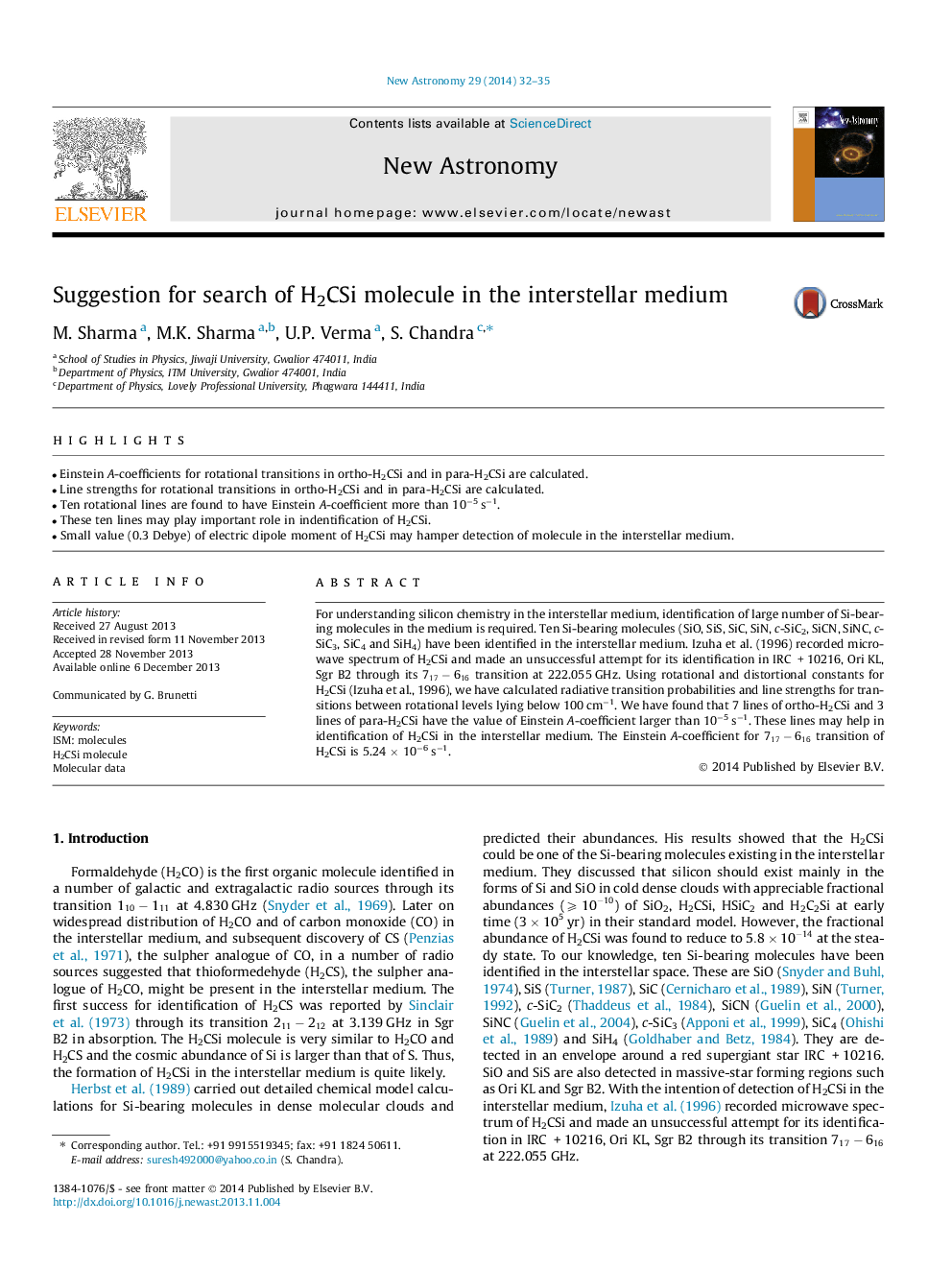| Article ID | Journal | Published Year | Pages | File Type |
|---|---|---|---|---|
| 1778996 | New Astronomy | 2014 | 4 Pages |
•Einstein A-coefficients for rotational transitions in ortho-H2CSi and in para-H2CSi are calculated.•Line strengths for rotational transitions in ortho-H2CSi and in para-H2CSi are calculated.•Ten rotational lines are found to have Einstein A-coefficient more than 10−5 s−1.•These ten lines may play important role in indentification of H2CSi.•Small value (0.3 Debye) of electric dipole moment of H2CSi may hamper detection of molecule in the interstellar medium.
For understanding silicon chemistry in the interstellar medium, identification of large number of Si-bearing molecules in the medium is required. Ten Si-bearing molecules (SiO, SiS, SiC, SiN, c-SiC2, SiCN, SiNC, c-SiC3, SiC4 and SiH4) have been identified in the interstellar medium. Izuha et al. (1996) recorded microwave spectrum of H2CSi and made an unsuccessful attempt for its identification in IRC + 10216, Ori KL, Sgr B2 through its 717-616717-616 transition at 222.055 GHz. Using rotational and distortional constants for H2CSi (Izuha et al., 1996), we have calculated radiative transition probabilities and line strengths for transitions between rotational levels lying below 100 cm−1. We have found that 7 lines of ortho-H2CSi and 3 lines of para-H2CSi have the value of Einstein A-coefficient larger than 10−5 s−1. These lines may help in identification of H2CSi in the interstellar medium. The Einstein A -coefficient for 717-616717-616 transition of H2CSi is 5.24 ×× 10−6 s−1.
